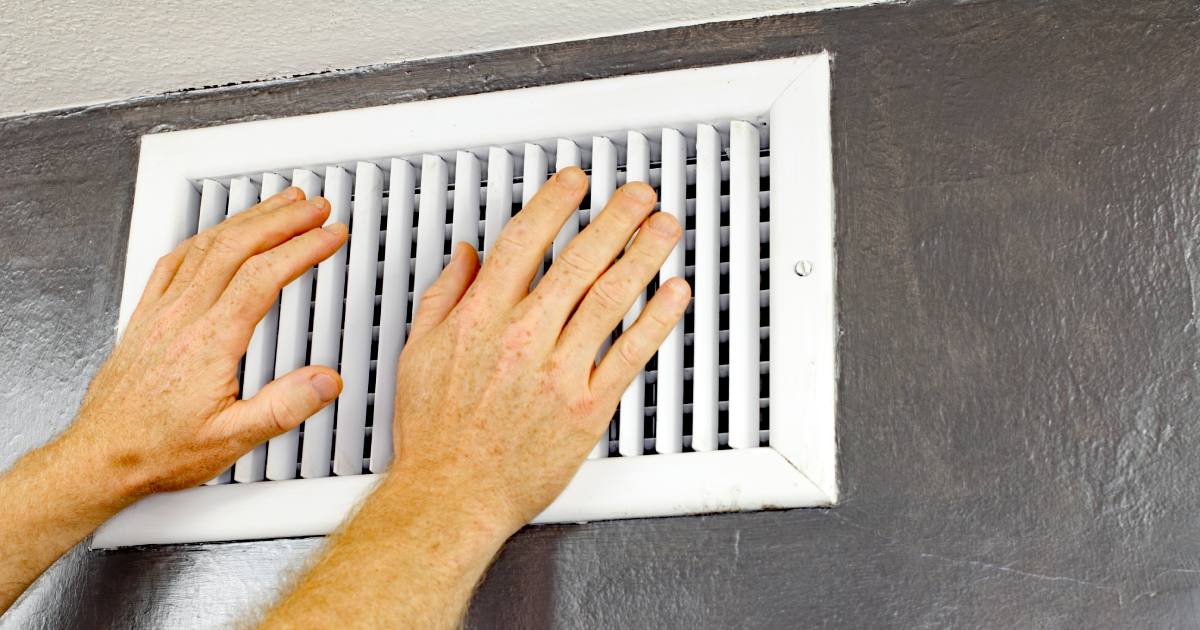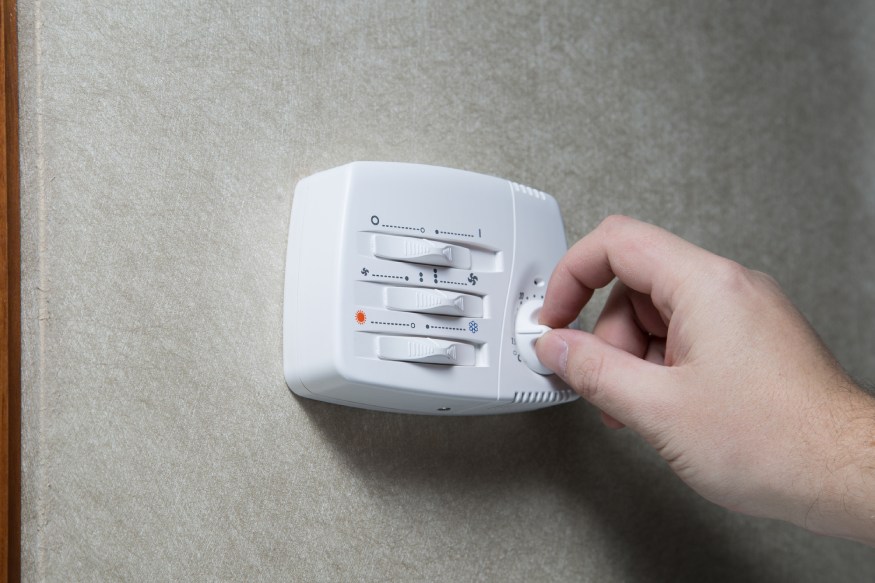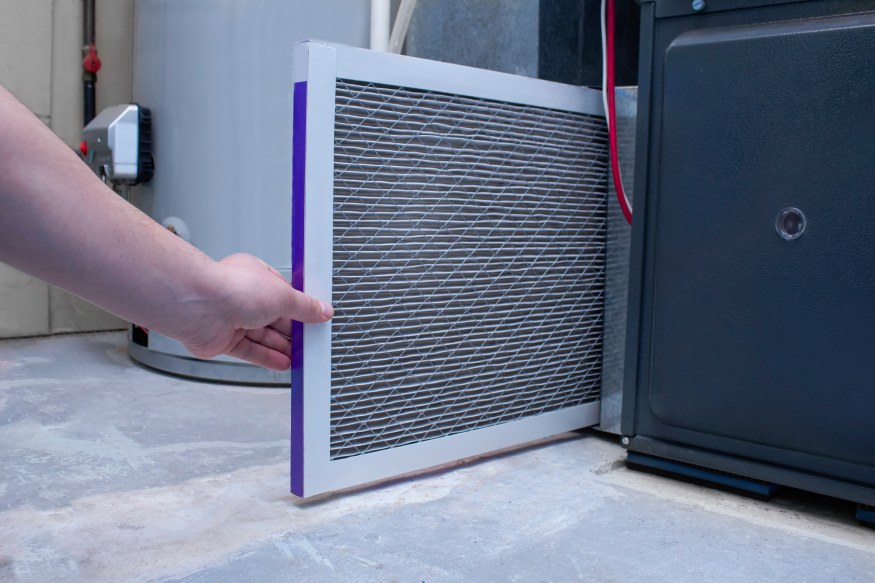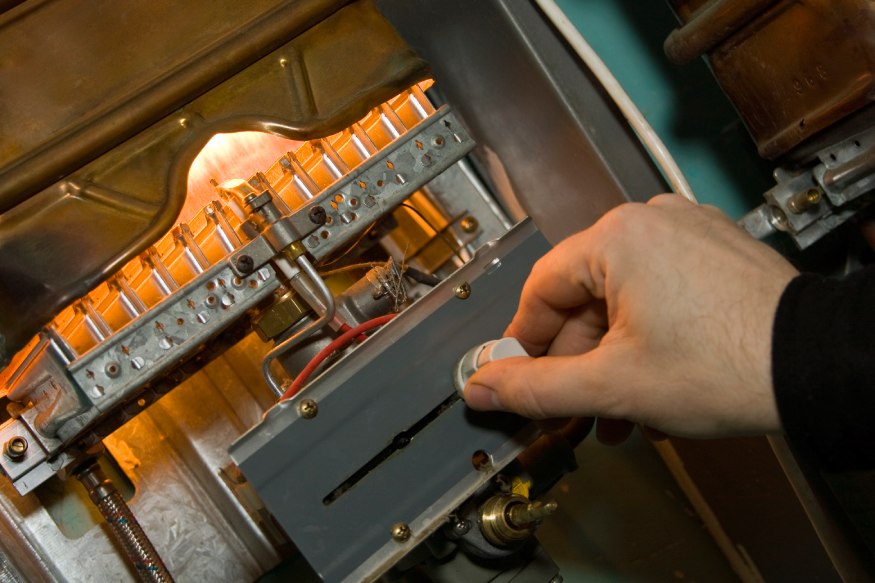Chilly, cold air streaming out of your vents is fantastic during sweltering summer months but a nightmare during icy grips of winter. You might ask yourself a series of questions– why is my furnace blowing cold air? Did someone turn the AC on?
The furnace ihen your home normally creates a warm, welcoming environment, but when it malfunctions, the vents can push out cold air that makes your abode less cozy.
If you are tackling cold and icy air coming from vents even when your heater is on, several things could cause it. This article delves into a few common culprits, so keep reading for help troubleshooting your malfunctioning furnace.
You’re not alone in your confusion, but a furnace blowing cold air is not as uncommon of a problem as you might think. but when they malfunction, dealing with the issue can be a headache

5 Reasons Your Furnace Blows Cold Air When Turned On
Your furnace may be blowing cold air for various reasons. An incorrectly set thermostat is one of the simpler causes, but there are other culprits that are best left to professionals.
The list below outlines a few common reasons furnaces blow cold air.
Incorrectly Set Thermostat

Before you dive into the more problematic culprits, check your thermostat’s setting. Sometimes, your thermostat is the root of the issues at hand, and it might be an easy fix.
First, verify the set temperature is higher than the room’s temperature. If you have a battery-powered thermostat, ensure it has fresh batteries. You can tell if it’s time to replace batteries by referring to your thermostat’s low battery notification.
Additionally, double-check that your thermostat is set to “HEAT.” Although it sounds ridiculous, it’s easy enough to bump the switch while dusting the area. If everything looks okay with the thermostat, move on to the next step.
Filter Issues

A clogged or dirty filter may trigger your furnace to switch off, which is part of the furnace’s safety system. So, what do you do? You should check the filter.
If it’s clogged or dirty, replace it with the same filter type and size. You should also install the filter in the right direction according to the manufacturer’s instructions. After changing the filter, allow your furnace to run to see if it corrects the problem.
You should typically replace your air filters once every 30 to 60 days to ensure your furnace remains in excellent condition. However, some filters can last up to 6-12 months. But it depends on the filter type, along with how dusty, how much pet hair is in your home, and how often you burn candles.
Pilot Light and Burner Problems

You may notice that your pilot light is on, and so is the blower, but the burners aren’t running. If you’re unsure if this is the case, double-check to see if the pilot light and burners (blue flames) are lit.
If the furnace flame isn’t blue, it could indicate a problem with your heat source, which is usually a problem best left to HVAC professionals to fix.
If the pilot light is off, you can relight it – provided that you know how to. If the burners don’t come on, there could be a more significant issue at play, one that will require the assistance of your local HVAC technician.
Condensate Line Problems
If you have a high-efficiency furnace, you could be dealing with a condensate blockage. A typical (and apparent) sign of this problem is water pooling around the base of the furnace.
High-efficiency furnaces create water while running that is drained via a condensate line– their exhaust gases cool rapidly, allowing moisture in them to condense from hot steam into liquid water.
When the line becomes clogged, water will back up into the furnace, causing the overfill kill switch (a safety mechanism) to trip your furnace off.
Various things could cause the blockage, including dirt, dust, or mold. Ice can also be culprit, especially if there was a recent cold snap.
Additionally, a malfunctioning condensate line could be triggered by a broken condensate pump. Generally, homeowners shouldn’t handle this type of problem, so call an HVAC contractor if you suspect condensate issues.
It’s Not Actually Cold
We know you know what “cold” feels like, but hear us out first. Furnaces don’t heat slowly due to mechanical limitations; they slowly heat your home to distribute heat without overshooting your thermostat’s setpoint.
If your furnace pumped a ton of heat in too quickly, your home would get many degrees warmer than you want. Your home’s temperature would bounce up and down many degrees all day long. This method of heating too quickly is not only uncomfortable but inefficient too.
Now that we’ve established why furnaces don’t heat your home fast, let’s move on to why that could make you think it’s blowing cold air. To properly heat your home, furnaces control their heating by maintaining a “delta T” of 16 to 22ºF.
Here’s what that means– if your delta T is 16ºF, your furnace will add air that is 16ºF hotter than the return air. So, if your home’s temperature is 50ºF, the air temperature in your supply vent will be 66ºF.
Have you ever felt air that’s 66ºF? It feels cold! That’s because the average temperature of your skin is 91ºF. This is the reason why the air might “feel” cold but is still warming your home.
Now let’s say the furnace warms your home to 64ºF; the furnace should now be suppling air into your home at 80ºF. That should feel warmer.
What About If My Furnace Only Blows Cold Air Sometimes?
If your furnace only blows cold air sometimes but seems to work fine otherwise, there are a few other reasons that could be causing the occasional fluctuation.
You Just Turned The System On
If you just turned on the heat, cool air may blow through the air ducts at first. Hot air may not be flowing quite yet, so it pushes out cool air initially. You’ll likely notice that the problem corrects itself within a short period.
The concept is similar to running water. When you first get into the shower, you might need to wait for the water to heat up before you get in. The same idea applies to your HVAC system: it needs a few minutes for the air to heat up.
The Fan Is On
If your fan is set to “ON,” it will constantly blow out cold air, regardless of if the furnace is heating it or not. You should check your thermostat and identity what it is set at. If it’s set to “ON,” switch it to “AUTO.”
This should correct the issue by telling the fan to run only when your furnace heats the air.
Dirty Flame Sensor
A dirty flame sensor may also be the culprit of your furnace’s issues. The sensor detects whether or not your furnace’s burners are lit.
Over time, the flame sensor gets dirty, which leads to the furnace having trouble detecting whether the burners are lit. The inability to detect this may cause the furnace to turn off the burners prematurely.
Generally, flame sensors get dirty faster when the air filters are dirty. If you have already switched out your air filters, it doesn’t hurt to check the flame sensors.
Malfunctioning Limit Switch
The limit switch in your furnace is responsible for regulating when the furnace’s fan is blowing air. It tells the fan when to start blowing air and when to stop. If it is malfunctioning, the fan may not cease blowing air.
In this case, the furnace will continue puffing air throughout your home, even though it’s not heated. If you suspect the limit switch is the culprit, you may want to contact an HVAC specialist to repair it.
Conclusion
A malfunctioning furnace can be an absolute nightmare in the winter months, particularly when the temperatures drop below freezing and the cold winds of Jack Frost blow. While some troubleshooting and repairing specific issues are straightforward, many require the knowledgeable experience of a heating and cooling specialist.
If you’ve gone down our list of possible causes and can’t seem to pinpoint the culprit, call in an HVAC technician to determine the issue at hand.
I just had a new furnace installed. I now notice that the two ducts in my kitchen which are the closest to the furnace in the basement, seem to blow a lower heat than the others in my livingroom, music room, bedroom and bathroom. The bathroom and music room are also the same distance as the kitchen to the furnace however the livingroom and bedroom are the furthest away. All ducts are nice warm air but the two in the kitchen. The old furnace all ducts were the same heat. The new one is different. Why is this.